Home »
Misc »
How to handle pressure in basketball
How to handle pressure in basketball
Handling Pressure and Changing Directions
Ball handling is key for players of all positions in today’s game – these drills will help develop this important skill.
Two skills that all player need to have in there repertoire are the ability to handle ball pressure and change directions to get by a defender. A team can never have enough ball handlers, so even if a player is not a primary ball handler, it is important to work on these skills to grow and expand their game. I’m going to discuss several drills to help players handle the ball under pressure and get by a defender using change of direction moves.
Click on a diagram to download the drill to your FastDraw library.
Handling Ball Pressure
Many players get passive when they are met with heavy ball pressure. This is a mistake – they should actually do the exact opposite. The best way to beat pressure is to attack it, using the pressure against the defense. Too often players shrink and put their weight on their heals, and expose the basketball to the defender when pressured.![]() All coaches have seen players get pressured and immediately pick up the ball, raising it above their head leaving. This opens up the opportunity for the defense to get up into them.
All coaches have seen players get pressured and immediately pick up the ball, raising it above their head leaving. This opens up the opportunity for the defense to get up into them.
When met with pressure, players should stay calm and make an assertive move against the pressure. A drag dribble or retreat dribble creates space and relieve the pressure. Instead of dancing and making a bunch of dribble moves that don’t take them anywhere, players need to dribble down hill toward the defender and use their body to get into the defense. Once they get the defender going down hill, the ball handler can use a drag dribble to stop and allow the defender to keep going, thus creating space between them and the defender. Another move that a ball handler can use to get out of pressure or if they are cut off is to use a retreat dribble as shown below. When retreating, it is important that the ball handler keep their chin on their shoulder and the ball on there back hip away from the defender.
Drag Dribble Series
Arc Retreat
Alley 1v1
Changing Directions
Changing directions with the basketball and being able to quickly get down hill toward the basket is a difficult skill for players to master, but becomes more and more important at each level as defenses get better. When changing directions, it is important to get low into the dribble move and stay low after making the move. Getting and staying low allows the ball handler to have leverage over the defense so they do no get bumped off of the driving line. The driving line is also an important concept for players to understand and practice during drills. The driving line is the line between the ball handler and the basket. Once a change of direction move is made, the ball handler must try to get back on this line to take a direct bath to the basket, absorbing any contact from defenders along the way.
Teaching players when to change direction is also crucial. At the youth level, far too many players stop going to the basket because either they received a little contact or, they do not know the proper time to change direction. It is important to keep reads as simple as possible so players are able to react as quickly as possible during a game. If a player gets outside their defender and only sees the defender’s shoulder, then they should attack that shoulder and get down hill toward the basket. If the ball handler sees the defender’s chest (so the defender is square with the ball handler), then the ball handler should change directions. This rule must also be applied when the ball handler is driving. The ball handler should keep driving to the basket on the same side until the defender cuts them off and gets square with the offensive player. Here are a few change of direction drills that rep these situations.
At the youth level, far too many players stop going to the basket because either they received a little contact or, they do not know the proper time to change direction. It is important to keep reads as simple as possible so players are able to react as quickly as possible during a game. If a player gets outside their defender and only sees the defender’s shoulder, then they should attack that shoulder and get down hill toward the basket. If the ball handler sees the defender’s chest (so the defender is square with the ball handler), then the ball handler should change directions. This rule must also be applied when the ball handler is driving. The ball handler should keep driving to the basket on the same side until the defender cuts them off and gets square with the offensive player. Here are a few change of direction drills that rep these situations.
Partner Change Direction
-Partners standing roughly 15-20 feet away -Approach partner and once you reach your partner perform change of direction move (inside out, crossover, between the legs, behind the back) -After the dribble move, escape dribble out and get back on the drive line -Dribble towards partner with an approach dribble and change speeds after the move with an escape dribble
Turn the Corner
These next two drills are what I call “game like” as they simulate a live situation by including a defender.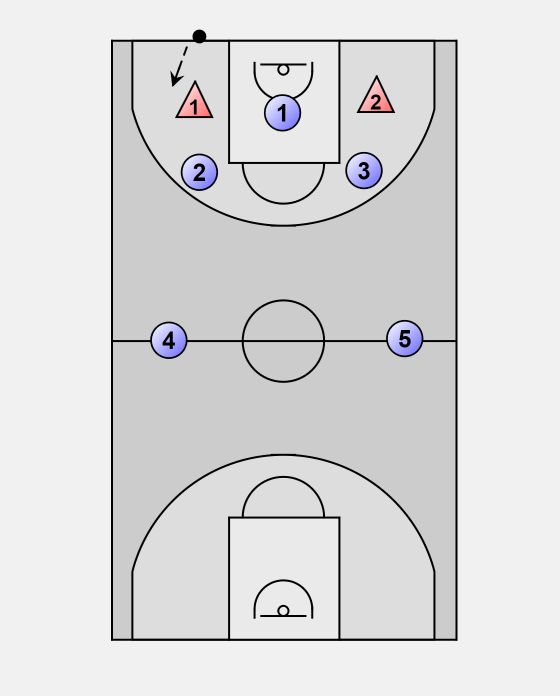 Progress to game like drills once players have completed the basic individual drills.
Progress to game like drills once players have completed the basic individual drills.
1v1 Pass
1v1 Touch
Final Thoughts
Many ball handling drills that I see are performed from a stationary position. Incorporating on-the-move drills is a must in any workout as that is how the game is played. Focusing on small details such as staying low and getting back onto the driving line are little details that can make a huge difference in a player’s ability to gain and keep an advantage against a defender.
No matter what position, a player will eventually be met with hard ball pressure and it is important to have the skills and knowledge to be able to attack and beat it. Moves and technique can be refined individually, but it is important to go against a live defender to truly understand when, why and how to perform a pressure relief move or change of direction dribble.
For more #PositionlessBasketball content, follow @PositionlessBb on Twitter.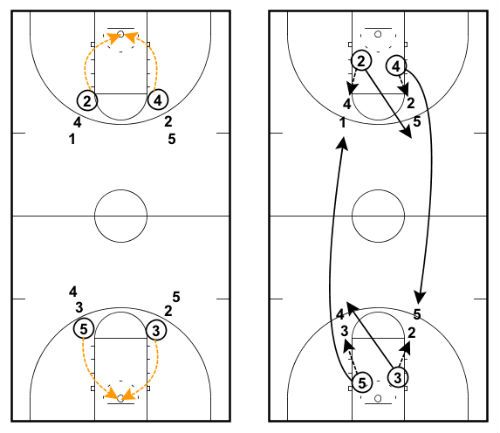
More on Player Development: 5 Exercises to Increase Basketball Explosiveness
The following two tabs change content below.
Jordan Petersen is a former collegiate player and coach. He currently runs Positionless Basketball, which provides elite level basketball training and camps for youth players all the way to college and professional. It's mission is to provide student-athletes with a unique experience that develops players' minds and athletic performance.
May 5, 2018 – May 5, 2018 – Jonas Mattisseck (ALBA), mit Ball, vorne Haris Hujic (Oldenburg), ALBA Berlin – EWE Baskets Oldenburg Basketball, easyCredit BBL, Deutsche Meisterschaft, Playoff, playoffs, play-off, DM-playoff, Viertelfinale, 1. Spiel, Spiel 1,Herren, men, Saison 2017/2018 Berlin, 5.5.2018 Mercedes Benz Arena *** Jonas Mattisseck ALBA with ball in front Haris Hujic Oldenburg ALBA Berlin EWE Baskets Oldenburg Basketball easyCredit BBL German Championship Playoff playoffs Play off DM playoff Quarterfinal 1 Match Game 1 Men Men Season 2017 2018 Berlin 5 5 2018 Mercedes Benz Arena (Credit Image: © Imago via ZUMA Press)
10 Keys for Beating Pressure Defense in Basketball
Basketball HQ Co-Founder Kyle Ohman wrote this basketball coaching article.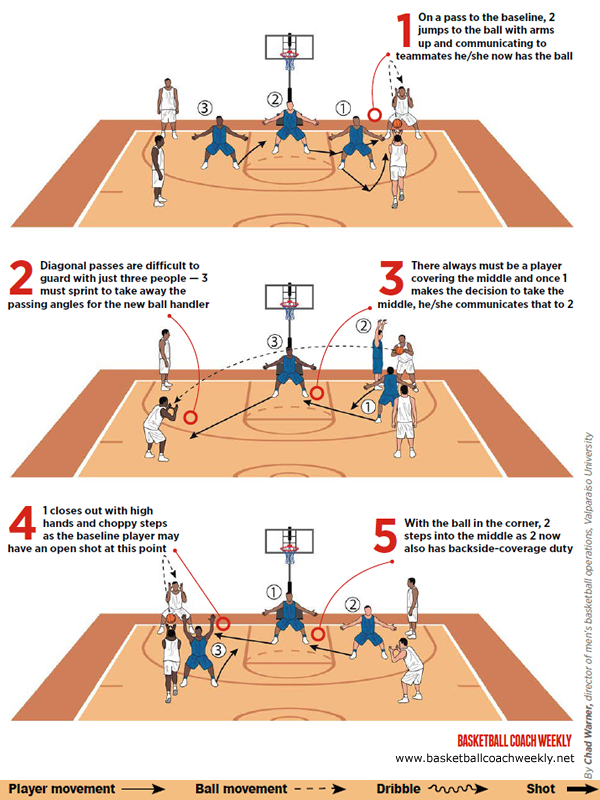
During the course of a basketball season, you will face teams looking to speed you up by using pressure. It may come in the form of a man press, zone press, or a basketball team that likes to trap and gamble at different points throughout the game. Whatever type of pressure defense you are facing, you need to have a game plan with your team, and that plan needs to have been prepped in practice beforehand.
This basketball coaching article aims to give you some focus points that will be pivotal in beating pressure defense in basketball. They will help you to be able to handle any type of pressure that comes your way and will allow your team to play with the confidence needed when facing a pressure defense.
So here are ten keys for beating a pressure defense in basketball and giving yourself the best chance for success.
10 Keys for Beating Pressure Defense in Basketball:
Make the Defense Pay
One of the biggest mistakes that basketball teams make against a pressing defense is automatically pulling the ball out to run offense every time after they have beaten the press. Don’t get me wrong; this is an excellent option at points in the game, depending on time and score. But, if you can make a pressing team pay by getting to the basket for a quality finish, do it!
Don’t get me wrong; this is an excellent option at points in the game, depending on time and score. But, if you can make a pressing team pay by getting to the basket for a quality finish, do it!
The best way to get a team to back off on the pressure is to make them pay with easy baskets. If you pull the ball out every time and reset after beating the press, why should they ever stop pressing you and gambling for steals? There becomes no penalty for pressing you, so they will continue to do it. Make them pay.
Stay Strong with the Basketball
It doesn’t matter what your game plan is if your players aren’t strong with the basketball. This means not only holding the ball with strong hands, but it also means being able to operate from a position of strength when looking to run an offense in the half-court. Players need to catch the ball and IMMEDIATELY square their defender up in triple threat. This will be the only way that they will be able to make the defender pay for overpressuring.
The reason it must be immediately is because if an offensive player doesn’t, the defender will eat up their space and force them to pivot backward. Offensive players must battle for the first 12 inches on every catch and square up their defender. Doing this will allow the offensive player to pivot to make a dribble move or pivot to make a straight line pass to another teammate.
If you are playing against a trapping defense, the player with the ball needs to play in a position of strength and do their best not to hold the ball for too long. As soon as the trap starts to come, the player needs to be aware and then look to make a quality pass out of it or split the trap with a dribble.
Use Pass Fakes and Pass on a Straight Line
Defenders off of the ball are going to be playing the passing lanes and trying to jump passes. So one of the most important tools to beating a pressure defense is the simple but extremely effective pass fake. In a basketball pressing defense, the players off of the ball are like free safeties in football.
They are reading the passer and trying to anticipate where they are going to pass the basketball. Throwing in pass fakes will freeze them or cause them to jump out of position before a player makes the pass. Players need to fake a pass and then fire a pass to an open teammate.
Along with pass fakes, players need to make sure that they aren’t throwing looping passes. Looping passes not only open up chances for live ball steals, but even if they do reach the receiver, most of the time, the defense is going to be right there on the catch and ready to harass or trap again.
Passers need to do their best to make straight-line passes to their teammates. This will help prevent tips and steals on passes, but it will also allow the receiver to attack an open space before the defense can shift. And, while yes, there will be times when a pass can be thrown over the top to a receiver, these types of passes need to be made with extra care and limited as much as possible.
Get Open to Receive the Pass
We have all seen basketball games where a point guard has turnover after turnover trying to get into the offense against an aggressive, pressuring defense. The average fan would blame the ball handler, but this is not always the case. In most cases, there is also some responsibility with the players off of the ball as well.
The average fan would blame the ball handler, but this is not always the case. In most cases, there is also some responsibility with the players off of the ball as well.
The players off of the ball need to do a great job of getting open on the wing to create a target for the ball handler. The other players on the floor can’t leave the ball handler out to dry by not getting open.
This does not mean dancing back and forth with a wing defender trying to fake them out either. Offensive players need to step across their defender’s high foot, seal them off like a post up, give the ball handler a target to hit by showing their hand, and then go meet the pass as it comes to them. And, if the defender is drastically overplaying, they can back cut them. Nothing will soften up a defense like getting some easy backdoor layups and dunks.
Another big part of getting open to receive a pass on the wing is timing. Players need to time up their step across move so that they are executing it right before the passer is ready to make the pass.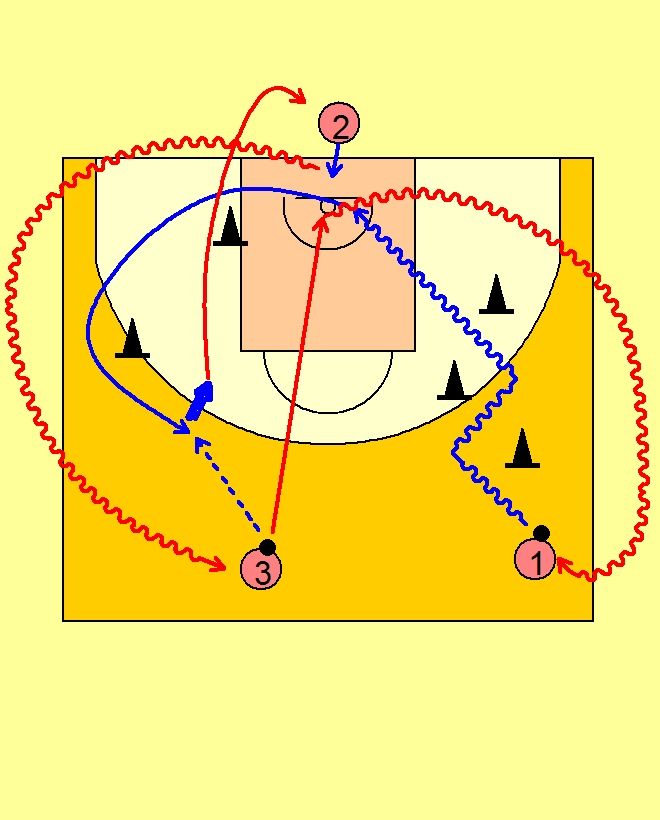 If they go too early, they may not be able to hold the seal long enough to stay open. If they go too late, the passer may be under extreme ball pressure and not be able to get them the ball.
If they go too early, they may not be able to hold the seal long enough to stay open. If they go too late, the passer may be under extreme ball pressure and not be able to get them the ball.
Meet Every Pass
Tips and deflections are what pressure defenses in basketball live off of. So it is vital that the receiver comes back to the pass and meets it with two hands every time. If players sit back and wait for the ball to come to them, they allow the defense more time to the ball and also a better angle to jump in and get a deflection. Players need to make it a habit to meet every pass.
If a player is being trapped and is in trouble, teammates must sprint to them and make themselves open receivers. At this point, players shouldn’t be as concerned about running the offense as they are with giving the passer an outlet pass to prevent a turnover.
When pressure is relieved with a pass, the player who caught the ball needs to reverse the ball immediately. Typically, in a trapping situation, the defense is loaded up on one side of the floor.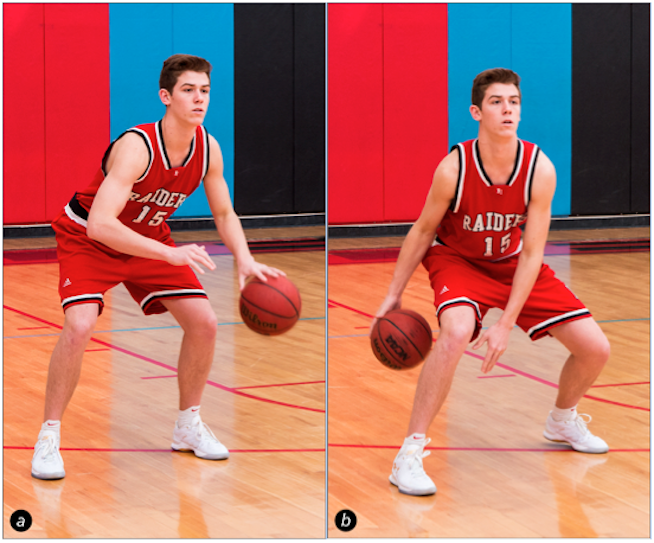 A quick ball reversal will make the defense pay for trapping. As we discussed earlier, the best way to get an over-aggressive defense to back off is to make them pay with easy baskets.
A quick ball reversal will make the defense pay for trapping. As we discussed earlier, the best way to get an over-aggressive defense to back off is to make them pay with easy baskets.
Hard Cuts
A great way to make a pressure defense pay is hard cuts. Players need to set up their defender and then make a hard cut to get open. If your team is running a specific basketball play, they need to use the cut in that play to get free, but if you are running motion offense, they really need to be reading the defender and then making the correct cut.
Your players can use several different cuts to get open. They can set up their defender by walking away from the ball and then cutting hard across their face, or they may act like they are trying to get open on the wing before cutting hard backdoor to the basket. Whatever type of cut your players use, they need to be sharp with it.
The better your basketball team’s cuts are, the more worried the defense will be about them, and that takes away from their ability to pressure you.
Another essential key to cutting is making sure that your players are a threat to score on every cut. Even if a player doesn’t get the ball on their cut, they need to be thinking, “cut to score.” This will make their cuts more deadly and will force the defense to respect them. A great cut may also open up another player off the ball by forcing their defender to help.
Play at Your Pace
Pressure defenses in basketball are designed primarily to do one thing, and that is to speed you up. By speeding you up, they force you to be sloppy with the ball and to take quick, low percentage shots. You must play at your speed and refuse to let the defense force you to get out of control.
A lot of this falls on the point guard as they need to understand the game flow. They need to know when they should be making the defense pay by being a little more aggressive and when the ball needs to be pulled out to run the offense.
So as a basketball coach, make sure that you are in clear communication with your primary ball handlers on game flow.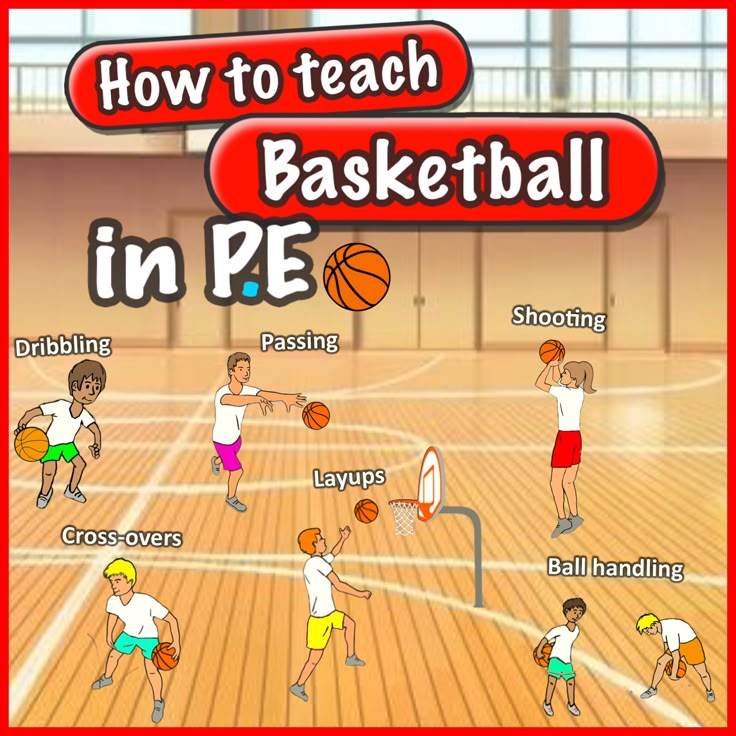 A good point guard will already naturally understand this, but you can really help out by the play you call out or a calm word encouraging your team to slow down the pace and execute.
A good point guard will already naturally understand this, but you can really help out by the play you call out or a calm word encouraging your team to slow down the pace and execute.
Avoid Danger Zones
When playing a pressing or trapping basketball team, there are places on the floor that you want to avoid at all costs. These areas are danger zones and will increase the chances of a turnover. One of these areas is the corners of the floor. Here are a few examples of corners being bad in a press.
- Corners: You must stay out of corners as much as possible. The spacing is tight, and the out of bounds lines and half-court line act like extra defenders.
- Inbounding Full Court: Make sure that your players set up at the free-throw line so that they have the space needed to cut to the ball to get open without having to catch the ball in the deep corner or tight to the baseline. Players will tend to want to start closer to the inbounder because they think they need to shorten the pass.
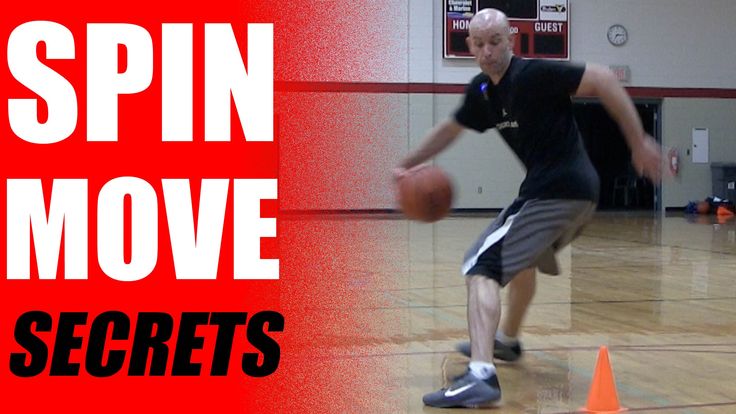 And, while it is important to shorten the pass, they need to start higher so that they have space to cut to get open first.
And, while it is important to shorten the pass, they need to start higher so that they have space to cut to get open first. - Bringing the Ball Across Half Court: Never dribble or pass the ball to someone that just crossed half court and is standing in the corner. The half-court line immediately becomes another defender. A great way to avoid this is by having your ball handler look to reverse sides of the floor as they bring the ball up the floor. This can be either done with a pass or with the dribble.
- Offensive Baseline Corners: Depending on what type of defense you are playing against, these corners aren’t as dangerous. However, against some half-court zone defenses in basketball, they will trap it anytime the ball goes to the corner. So make sure you are aware of that.
Another danger zone is over-penetration. Players need to make sure that they don’t get sped up attacking the press and then dribble into trouble. Your ball handlers must recognize potential trapping areas or areas that are too congested to dribble into. A great move to avoid these situations is the retreat dribble.
A great move to avoid these situations is the retreat dribble.
If a player does happen to find themselves stuck in a danger zone, they need to be calm, patient, and strong with the ball. The worst thing they can do is toss the ball across the floor in hopes that it might find an open teammate. A wild pass like this is what the defense lives for and will most likely end up in a wide-open layup or dunk for the other team.
The player being trapped needs to be strong with the ball. They must do their best to pivot around or through the trap to make a pass to an open teammate. The other four players on the floor are in emergency mode and must flash hard to the ball to present an open target.
Have a Release Valve
When bringing the ball up against a pressing zone defense in basketball, you always want to have a player behind the ball. This player is the release valve and will be there for trapping emergencies and being able to reverse the ball quickly. This action works like a seesaw. If the ball is swung over to the trailing guard, the player who just passed it must now get behind that ball handler to be their release valve.
If the ball is swung over to the trailing guard, the player who just passed it must now get behind that ball handler to be their release valve.
Obviously, you still need to be looking to advance the ball up the floor because you only have a limited amount of seconds to get the ball across half court. Having a release valve helps with this because it spaces the defense out and allows the ball to quickly change sides of the floor and then be advanced.
If you are playing against an aggressive full-court man defense that likes to run and jump, you want to get all of your players away from the ball handler. This will prevent the run and jump because the distance is too great. However, if you have players hanging around the ball handler as they bring the ball up the court, the defense can run and jump as they please and create havoc.
If the ball handler is really struggling with the full-court pressure, you could try two different things. The first would be to have your post player set a ball screen in the backcourt. This should be okay because the other team’s post defender is most likely not going to be as quick of foot and will not be able to execute a good trap.
This should be okay because the other team’s post defender is most likely not going to be as quick of foot and will not be able to execute a good trap.
The second option is to have one of your bigs bring the ball up the floor. If you have a hybrid post player that can handle the ball, go ahead and give them the ball, clear the floor, and then have them bring the ball up. Once they cross half court, your point guard can come to get the ball from them to run the offense. A handoff is an excellent action to help with this.
Quality Shots
If you are taking rushed low percentage shots, a pressing defense in basketball doesn’t even have to get one steal to accomplish its goal and beat you. It is paramount that you get quality shots on every possession. Don’t allow yourself to get into an up and down game where you are shooting wild shots. As we talked about earlier, you should be making the defense pay for pressing you, but this means taking a great shot.
A big part of this comes down to time and score.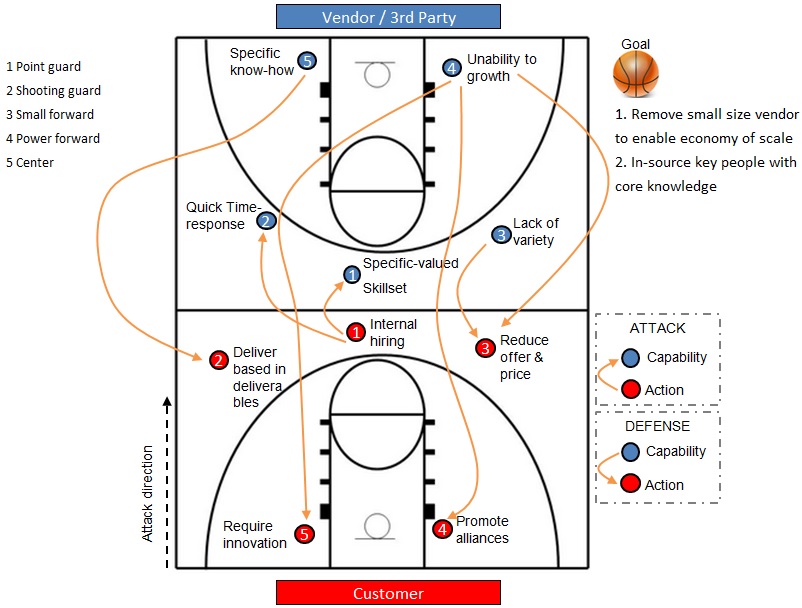 If you are on a run and rolling, a dribble down open three from one of your better shooters might be a good shot. On the other hand, if the other team just went on a 6-0 run, this is not a shot you want to be shooting. You will want to run a solid set and make the defense have to guard to get a stop.
If you are on a run and rolling, a dribble down open three from one of your better shooters might be a good shot. On the other hand, if the other team just went on a 6-0 run, this is not a shot you want to be shooting. You will want to run a solid set and make the defense have to guard to get a stop.
This is going to be something that clearly needs to be explained to your players. The better they understand the ebb and flow of a basketball game, the more confidence they will play with. If it is confusing to them about what you are asking of them, they will play tentative, which also falls into the defense’s trap.
Drills to Use for Beating Pressure Defense in Basketball
It is essential that in practice, you are able to simulate pressure defense and prepare your team for what it is going to look like. So here are a few basketball drills that you can use during practice to help you work on some of these areas. *Disclaimer* These drills only work if the defense is getting after the offense!
- 4 on 5 No Dribble Basketball Drill: This drill is excellent for working on being strong with the ball and meeting every pass.
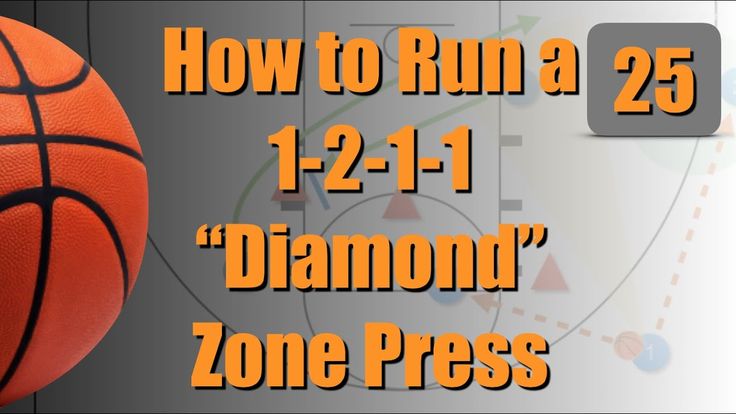 The drill is exactly as the title describes it. You are going to have four offensive players and five defenders. The offensive players cannot use any dribbles and must complete ten passes or make a layup/dunk to win the drill. The defense is trying their absolute hardest to get a steal.
The drill is exactly as the title describes it. You are going to have four offensive players and five defenders. The offensive players cannot use any dribbles and must complete ten passes or make a layup/dunk to win the drill. The defense is trying their absolute hardest to get a steal. - Teaching Points: The more your players can get the ball moving, the easier it will be. The problem comes when a player holds the ball for too long, and the defense can sink their teeth in on the trap. Also, challenge your players to get the ball reversed as much as possible as this will force the defense to have to cover more ground.
- Partner Pressure Passing Basketball Drill: This drill will work on being strong with the ball in triple threat and being able to make a pass out of it. You will have groups of 3 players, and it will be set up like the monkey in the middle game. The player with the ball must hold on to the ball and stay strong in the triple-threat position for 3-4 seconds while the defender in the middle harasses them.
 After a few seconds, the player will use a pivot, pass fake, etc., to get the pass around the defender to the 3rd player. The player making the pass is going to follow the ball and become the next defender. Just repeat this pattern for the desired amount of time. * Players can grab and reach a little bit as well to make this basketball passing drill harder.
After a few seconds, the player will use a pivot, pass fake, etc., to get the pass around the defender to the 3rd player. The player making the pass is going to follow the ball and become the next defender. Just repeat this pattern for the desired amount of time. * Players can grab and reach a little bit as well to make this basketball passing drill harder. - Teaching Points: The player with the ball needs to keep their eyes up and see the floor as they are being pressured. And, even though they aren’t able to use a dribble in this drill, they need to stay in an athletic position where they would be able to get by the defender with a dribble in a game if needed.
- 3 Man Perimeter Passing Basketball Drill: One of the biggest things that will kill a pressure defense is ball reversals, and this drill will work on just that. You will have three players on the perimeter, located on both wings and the top of the key. They are each going to be guarded by a defender.
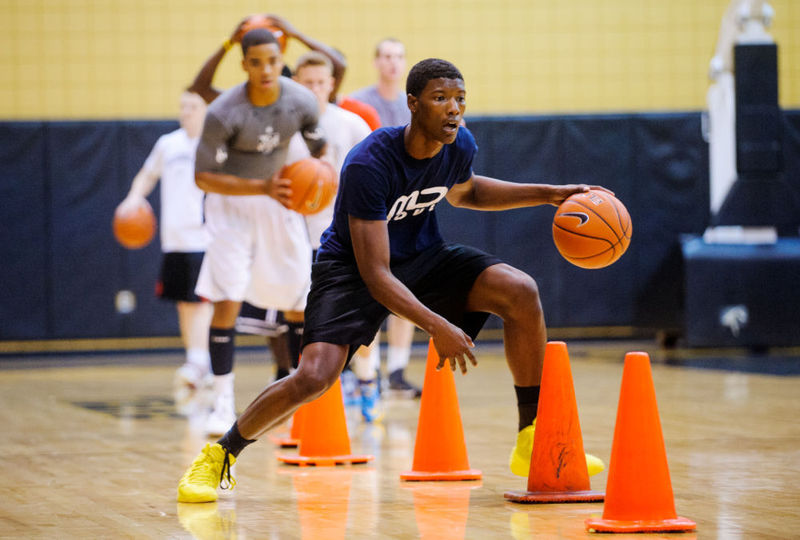 The players on the perimeter must be able to swing the ball back and forth between each other without using any dribbles or getting pushed out away from the 3 point line. They can, however, back cut for a finish if the defender is completely overplaying them. Here are a few variations of this team basketball drill.
The players on the perimeter must be able to swing the ball back and forth between each other without using any dribbles or getting pushed out away from the 3 point line. They can, however, back cut for a finish if the defender is completely overplaying them. Here are a few variations of this team basketball drill. - Variation 1: Have the defenders play dummy defense. If you have younger players that aren’t used to getting open, you should start here. Go for a set time or a number of passes and then switch offense and defense or rotate new people in.
- Variation 2: Full speed defense and have it go for a set time or number of passes. After that, rotate new people in or switch.
- Variation 3: Full speed defense, and then once you are satisfied with the offensive player’s ability to move the ball, call out, “live” and then let them play 3 on 3 looking to score (they are now able to use dribbles). It makes it a little more game realistic.

- Teaching Points: This drill is also a great way to practice timing when getting open. As the ball is being swung, players should time up their step across and seal. The better the timing is, the easier it will be to move the ball.
To really turn up the pressure on any of these basketball drills, encourage your defenders to be extra physical and maybe even permit a little grabbing and fouling. Not only will this allow your players to work on playing against physical teams, but it will also help to teach them to play against missed calls. Just make sure that your defenders know not to reach and foul when they go back to playing normally (don’t want any bad defensive habits).
Beating Pressure Defense in Basketball Conclusion
Notice that this article’s title is not “handling” pressure defense, but rather it is “beating” pressure defense in basketball. That is because when you face a pressure defense, you need to not only take care of the ball, but you must also attack the pressure and make them pay for gambling.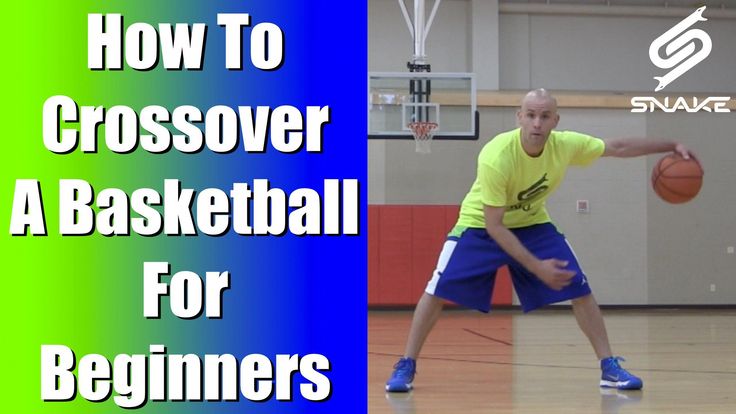
As a basketball coach, this needs to be the mindset of your team. This type of mentality will also be inspiring to your team and give them confidence when playing against pressure. If you have spent the needed time with your team working on beating pressure, your team’s eyes should light up when they play a gambling defense because they know they are about to exploit them.
Beating a pressure defense in basketball also has a lot to do with mindset. If your players can go into a game with a confident mindset, it will be a long game for the other team. However, if they start to doubt themselves and begin to play tentatively, the defense will be all over it and capitalize on it. As a basketball coach, it will be key that you are staying positive with your players and maintaining this confidence throughout the course of a game.
All of these keys for beating pressure defense in basketball will allow your team to play with confidence and deal with any pressure that comes their way.
How to improve dribbling at home?
6 tips that will help every basketball player
Sometimes you look at Irving's highlights, you want to practice dribbling, but they don't let you into the gym. It's winter outside and you can't knock the ball either. What to do at this moment and how to be, we analyze in this article.
Often players say dribbling but don't know what it means. Let's take a broader view and break down possession in general, because basketball isn't just about hitting on the spot and crossovers. Our main goal is to score more than the opponent, and for this we need to be able to move around the court from one point to another with the ball under pressure from the defender and bring the ball into a comfortable position for a shot or pass. It's all ball possession.
Can ball possession be improved at home? Yes, but the effectiveness depends on the level of your training. Work at home is very limited, so if you have no other choice - it is better to try to do at least something than just sit.
Work at home is very limited, so if you have no other choice - it is better to try to do at least something than just sit.
What to do? Hold 6 points:
1. If you have a couple of square meters and no neighbors below, or they are not disturbed by your hitting the ball, then you can fully train.
For example, you can work on these things:
All this and more, we are working on the LVL UP course in the online school. A couple of square meters and 15 minutes a day is enough to progress.
2. If you can't hit the ball, you can work on your hand speed and ball feel.
Do various rotations around the head, legs and body. You can do the same in the lunge and other basketball positions. Try different combinations and stance changes.
3. In continuation to the second point, the ball is thrown with straight arms.
Start simply with your arms outstretched in front of you, then try with up and down movements, and in the most difficult variation, add a chest rotation.
4. Visualization.
Close your eyes and imagine yourself moving around the court with the ball. It is important to fully immerse yourself in the moment and live it, and not be an outside observer.
5. Visualization in life, or I don't know what else to call it.
Start repeating the movements as if you were hitting a ball and making transfers. Take a video and see how it looks from the outside. It probably won't look like cool dribbling. Try to fix it.
6. Work on the body.
By developing your body, you will open up opportunities for skill development. Regular dribbling requires a mobile hip, strong glutes, a mobile chest, and a strong core to better deal with defensive pressure. You can work on this at home too.
Examples of the importance of the body in possession of the ball.
You can always work on yourself and become better. Everything depends on your desire.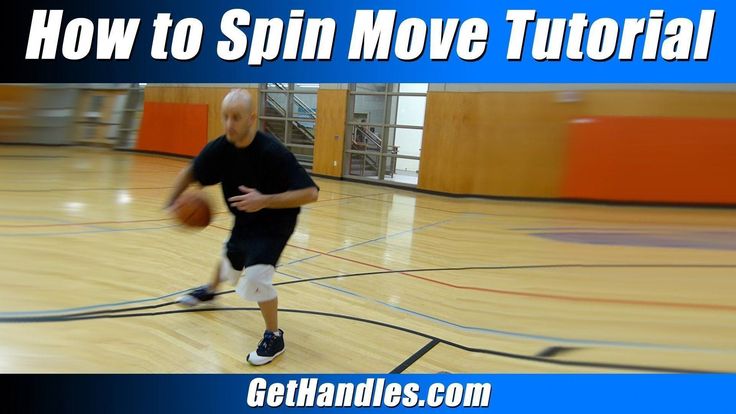 Hope this article helps you.
Hope this article helps you.
Nikita of coachmen
Founder Ball in
Subscribe to new posts
times a week we will send you fresh materials so that you do not miss
| | E-mail | E-mail0074 |